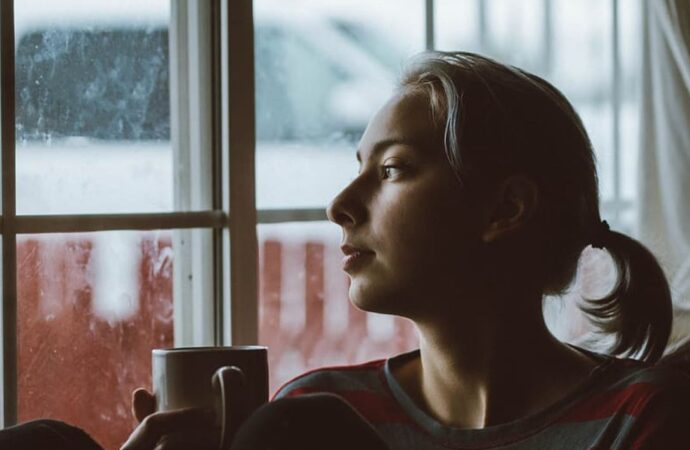At this moment in our history the United States has 26 Republican governors and 24 Democratic governors.
Of the 26 Republican governors, nine have issued “shelter-in-place” orders, closing nearly all businesses, and commanding people to stay at home except for necessary trips to grocery stores, pharmacies, and hospitals.
Of the 24 Democratic governors, 20 have issued “shelter-in-place” orders. Washington D.C., a Democratic stronghold, has also enacted the same policy.
As such, the Democrats have clamped down on businesses and social interactions at twice the rate of Republicans.
In holdout states like Texas, Missouri, and Florida, Democratic legislators are pressuring Republican governors to shut down all non-essential jobs and order Americans to remain at home. This pressure is having an effect: The Republican governor of Florida just announced a stay-at-home order for south Florida.
Certainly the discrepancy in these responses has much to do with the states themselves. Coastal states, many governed by Democrats and containing large cities, face more challenges than states with lower population densities.
But does this difference show Democrats to be more compassionate than Republicans, or that they care more about their constituents? Or does this disparity in strategies merely reflect differing political philosophies, with Democrats mostly seeking government solutions and Republicans mostly looking to citizens to govern themselves? What will be the result of these two approaches?
Let’s take a look.
Governor Ralph Northam of Virginia, where I live, formerly issued a stringent set of rules governing businesses, the size of gatherings, and social distancing during the COVID-19 pandemic. Restaurants shut down but could remain open for takeout. Schools and churches were closed.
With the number of cases growing in the state, Northam issued a stay at home order on Monday, March 30, effective until June 10.
Meanwhile, the government of Texas is allowing local officials to make such decisions themselves. This has resulted in 82 percent of the state being subjected to stay-in-place orders. For Missouri, which has so far resisted stay-in-place, Republican Governor Mike Parson stated, “When you start talking about closing down the state for 30 days, 60 days 90 days, the effects that has on everyday people are dramatic. That means people will lose their jobs, businesses will close, [and] the economy will be in worse shape than ever.”
Given its long-term reputation as a socialist country, it comes as a surprise to find Sweden taking Parson’s approach. In that country, the government has issued guidelines regarding the coronavirus, but leaves compliance up to individual citizens. Sweden’s borders, kindergartens, grammar schools, restaurants, and ski slopes all remain open. The Swedes take the same precautions we do – washing their hands, avoiding large groups, and self-quarantining – but they do so voluntarily.
As David Catron of The American Spectator tells readers, Sweden’s state epidemiologist, Anders Tegnell, seems to have come down on the side of Stanford University epidemiologist John Ioannidis. Ioannidis warned in mid-March of an “evidence fiasco” regarding the virus, pointing out the lack of hard data to justify closing down entire economies. He also pointed out possible consequences of such closures:
One of the bottom lines is that we don’t know how long social distancing measures and lockdowns can be maintained without major consequences to the economy, society, and mental health. Unpredictable evolutions may ensue, including financial crisis, unrest, civil strife, war, and a meltdown of the social fabric. At a minimum, we need unbiased prevalence and incidence data for the evolving infectious load to guide decision-making.
In commenting on the Swedish approach to this pandemic, Tegnell says, “That’s the way we work in Sweden. Our whole system for communicable disease control is based on voluntary action.”
The Swedes are neither oblivious to the dangers of the virus nor immune to its social and economic effects. The disease exists among them. Their economy has taken a major hit and, like the American stock market, the Swedish market has seen a precipitous drop in stocks, the worst in modern history.
We have arrived at a fork in the road, and there’s no clear answer as to which direction we should go. If we follow the Swedish model, more people will probably die. If we stick to the stay-at-home alternative, millions of people will lose their jobs and businesses, and the economy could take years to recover. Fox Business reports that we are already seeing a record number of unemployment claims, with some projecting the United States could reach a 32 percent unemployment rate, a number far worse than that of the Great Depression.
In all of our panic, in the barrage of information flung at us each day regarding COVID-19, there is one certainty: our country and the world will never be the same again.
Whatever path your state has chosen, we can best fight coronavirus by keeping our wits about us, by helping our friends and neighbors when possible, and by embracing hope rather than despair.
—
[Image Credit: Pikrepo, CC0 1.0]
















Leave a Comment
Your email address will not be published. Required fields are marked with *